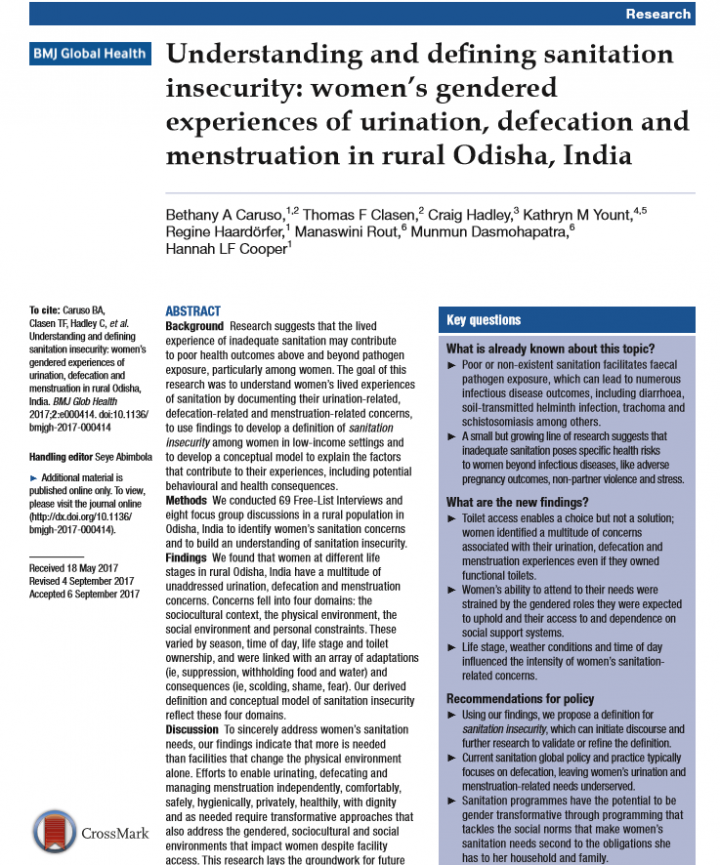Understanding and defining sanitation insecurity: women’s gendered experiences of urination, defecation and menstruation in rural Odisha, India
Caruso,B. A., Clasen, T. F. , Hadley, C., Yount, K. M., Haardörfer, R., Rout, M., Dasmohapatra, M., Cooper, H. L. (2017)

Published in: 2017
Pages: 13
Publisher:
BMJ Global Health
Author:
Caruso,B. A., Clasen, T. F. , Hadley, C., Yount, K. M., Haardörfer, R., Rout, M., Dasmohapatra, M., Cooper, H. L.
Uploaded by:
SuSanA Admin
Partner profile:
common upload
2441 Views
15 Downloads
Location of library entry
Background Research suggests that the lived experience of inadequate sanitation may contribute to poor health outcomes above and beyond pathogen exposure, particularly among women. The goal of this research was to understand women’s lived experiences of sanitation by documenting their urination-related, defecation-related and menstruation-related concerns, to use findings to develop a definition of sanitation insecurity among women in low-income settings and to develop a conceptual model to explain the factors that contribute to their experiences, including potential behavioural and health consequences.
69 Free-List Interviews and eight focus group discussions wereconducted in a rural population in Odisha, India to identify women’s sanitation concerns and to build an understanding of sanitation insecurity.
Women at different life stages in rural Odisha, India have a multitude of unaddressed urination, defecation and menstruation concerns. Concerns fell into four domains: the sociocultural context, the physical environment, the
social environment and personal constraints. These varied by season, time of day, life stage and toilet
ownership, and were linked with an array of adaptations and consequences (ie, scolding, shame, fear). Our derived definition and conceptual model of sanitation insecurity reflect these four domains.
Bibliographic information
Caruso,B. A., Clasen, T. F. , Hadley, C., Yount, K. M., Haardörfer, R., Rout, M., Dasmohapatra, M., Cooper, H. L. (2017). Understanding and defining sanitation insecurity: women’s gendered experiences of urination, defecation and menstruation in rural Odisha, India. BMJ Global Health
Filter tags
East Asia & Pacific English Gender equality Menstrual Health and Hygiene (MHH)














